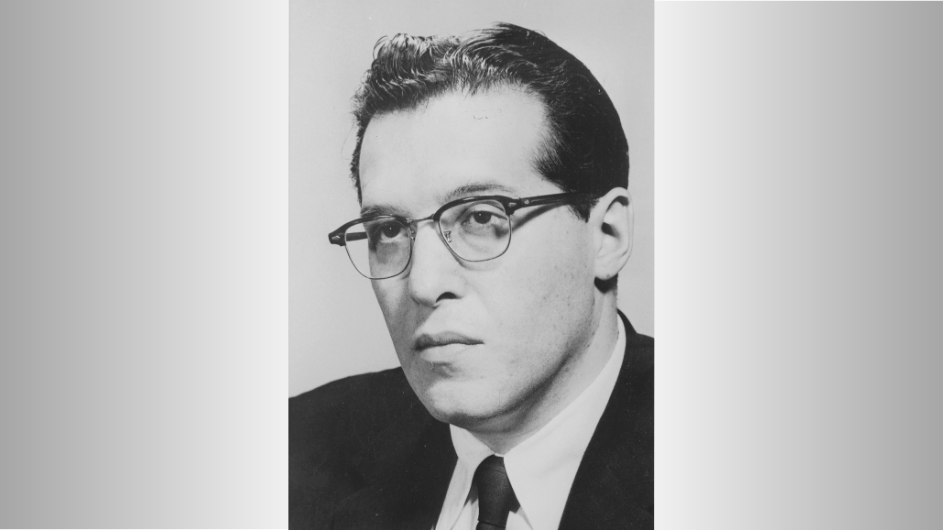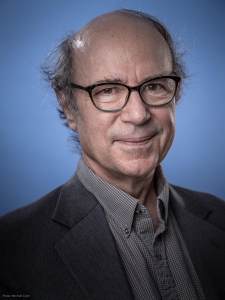New Lecture Series Celebrates Nobel Prize-Winning Alum Julian Schwinger
MIT physicist and Nobel Laureate Frank Wilczek will give the inaugural talk on April 15.

Quantum electrodynamics (QED) has been called the most accurate theory humankind has ever produced. And there’s a Columbian among those who developed this fundamental physics: Julian Schwinger (CC’36; GSAS‘39). The Columbia alum shared the 1965 Nobel Prize in Physics with Richard Feynman and Sin-Itiro Tomonga for their work that combined quantum mechanics with Einstein’s theory of special relativity to establish quantum electrodynamics, which describes how particles and light interact up to the highest energies.
Schwinger’s profound influence on modern-day science extends far beyond his Nobel prize-winning work and includes his development of source theory; his introduction of the concept of anomalies; his work on Green’s functions and his two-time Green’s function approach to statistical mechanics, which have transformed our approach to quantum physics and electromagnetism. To commemorate the myriad areas of physics that Schwinger influenced, the Physics Department is launching a Schwinger Lecture series to bring thought leaders in physics to Columbia.
The first Schwinger Lecturer will be given by Frank Wilczek, a protean theoretical physicist at MIT who won the Nobel Prize in Physics in 2004 for “the discovery of asymptotic freedom in the theory of the strong interaction” and, like Schwinger, has decisively influenced quantum physics across many domains. Wilczek’s lecture, “The Symmetries of Time,” will be on April 15 at 4:00 pm in the World Room in Pulitzer Hall.
“Just as Julian Schwinger gave us new ways of thinking about quantum theories across multiple scientific domains, Wilczek’s work is crucial to our modern understanding of quantum physics,” said Columbia physicist Andrew Millis. “His Nobel prize-winning work helped put the theory of the strong force on a sound theoretical footing. His work on quantum chromodynamics at high density, on axions, and on quantum black holes has helped change the way we think about these subjects. His concept of fractionally charged particles (“anyons”) is fundamental to how we understand the quantized Hall effect. And his recent work on time crystals has introduced a new paradigm of nonequilibrium physics. We are delighted to bring Frank’s ideas to the Columbia community for the first Schwinger Lecture.”
“Just as Julian Schwinger gave us new ways of thinking about quantum theories across multiple scientific domains, Wilczek’s work is crucial to our modern understanding of quantum physics."
Though Schwinger spent his career at institutions around the United States, including the MIT Radiation Laboratory, Harvard, and the University of California, Los Angeles, he had deep New York, and Columbia, roots. He was a native New Yorker, born in the city on February 12, 1918. Self-taught in physics from a young age, including from books and papers among the stacks of Columbia’s libraries, he enrolled at City College of New York when he was just 14. Not long after, he became acquainted with Columbia’s Isidor Isaac Rabi, who arranged for Schwinger to transfer to Columbia on a scholarship. He received his B.A. in Physics in 1936 and, continuing to work with Rabi, his PhD in 1939 at the age of 21.
Recognizing Schwinger’s New York and Columbia roots, the Julian Schwinger Foundation bestowed Columbia’s Physics Department with a $900,000 gift last year to honor Schwinger’s legacy. The Schwinger gift supports the Julian Schwinger Graduate Fellowship. Columbia’s first Schwinger, Physics PhD student Ilya Komissarov, continues that legacy of using foundational methods to study physics across a range of fields, first in high energy particle physics and cosmology and now, with Columbia faculty member Raquel Queiroz, the behavior of electrons in so-called topological materials. In a recent Q&A, Komissarov shared his excitement about being contacted by experimental groups who wanted to explore his recent theoretical findings. “It gives a really nice sense of community, that your work matters,” said Komissarov.

